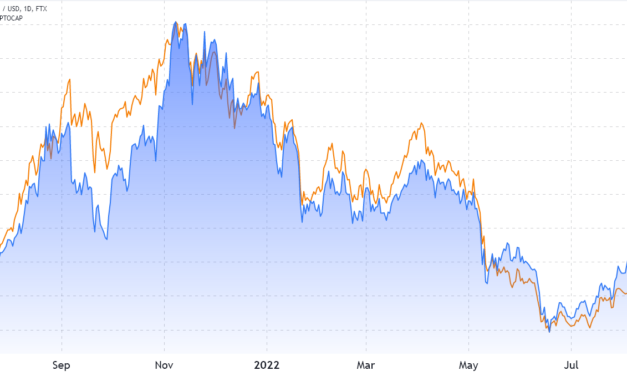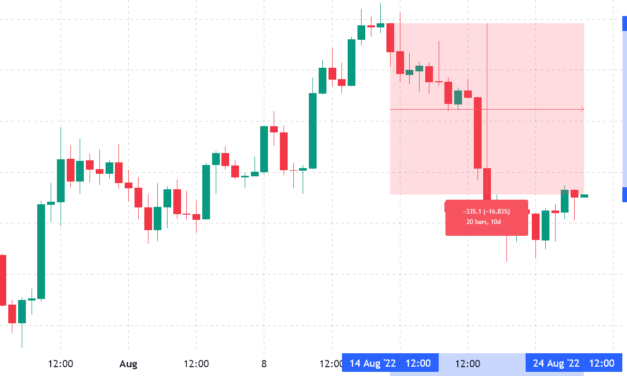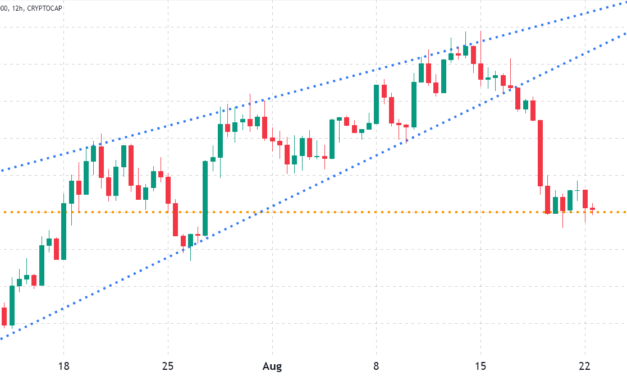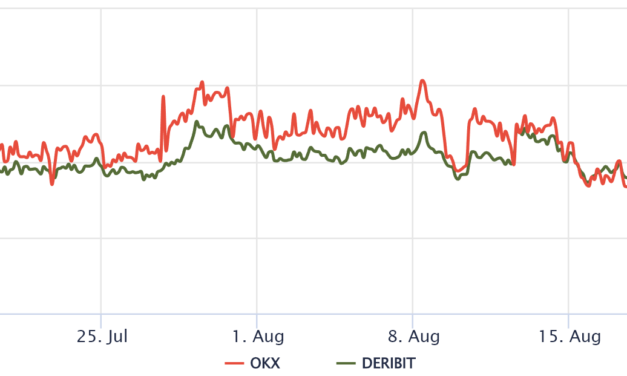3 reasons why Binance Chain (BNB) rallied 66% since the crypto market crashed
BNB, the native token of Binance’s BNB Chain , has bounced 66% from its $183 low in mid-June. The move consolidates its position as the third-ranked cryptocurrency (when stablecoin market caps are removed) and reflects a $50 billion market capitalization. BNB has outperformed the broader altcoin market capitalization after a devastating 73% correction that began in November 2021.BNB token at FTX (blue) vs. Total market cap ex-BTC (orange). Source: TradingViewThe above chart displays how this smart contract blockchain network suffered during the recent market collapse and how similar movements happened across the altcoin market. Now that BNB price has reached $300, let’s take a look at how the asset is positioned compared to July 2021 when it traded for the same price.Is BNB’s market cap and valuation justified?Back in July 2021, the altcoin market capitalization stood 21% higher at $740 billion. Bitcoin (BTC) and Ether (ETH) had already established themselves as the market leaders, but the dispute for the third position was far from settled, at least in terms of the total value.Top coins by market cap on July 4, 2021. Source: CoinmarketcapDespite still being the third largest cryptocurrency, BNB’s market cap was $47 billion, while Cardano (ADA) held a $46 billion valuation. Currently, no altcoin remotely matches its dominance and the gap has widened by more than $30 billion.Smart contracts form the foundation of all decentralized applications (DApps), including decentralized finance, gaming, marketplaces, social networks and many other use cases. So what other success metrics are there besides the number of active users using addresses as a proxy?Top DApps active addresses in 30-days, excluding gambling. Source: DappRadarPancakeSwap, BNB Chain’s decentralized exchange, has 1.98 million active addresses. The number is so massive that aggregating the next four competitors is not enough to match it. According to the data, the runner-up to BNB Chain is 1inch Network, which holds 91% fewer users.For those questioning whether BNB Chain is a one-trick pony, the network holds a couple of games that have 83,000 or more active addresses each and 78,450 that use the 1inch Network. Asking whether PancakeSwap really holds that many users is a valid question, but the Ethereum network only holds three DApps surpassing 30,000 active addresses, namely Uniswap, OpeanSea and MetaMask Swap.Smart contract deposits set BNB Chain apart from its competitorsOne might argue that the total value of users’ deposits in smart contracts are critical to determining a network’s success. However, while it is highly valid for finance applications, there’s not much reason for marketplaces, games, collectibles and social networks to hold large deposits.Total Value Locked ranking, USD. Source: DefillamaCurrently, Ethereum is the absolute leader and the DApp hosting the algorithmic-backed DAI stablecoin has $8.25 billion worth of deposits. Still, this is more than justified by Ether’s $208 billion market capitalization, which is over four times higher than BNB with $50 billion.Data shows a consolidated third place for BNB Chain with $5.5 billion in TVL, which is more than double Avalanche (AVAX) and Polygon (MATIC). Binance leads in trading volumesWhen accounting for the BNB’s valuation, especially in comparison to smart contract blockchains, there needs to be a different methodology because the token has additional utility on the Binance exchange. Furthermore, providing discounted trading fees, opportunities at the token sales launchpad and exclusive staking opportunities allow BNB to stand out among its competitors.Related: Coinbase eyes long-term growth of subscription revenue, NFTs still a focusWebsite visitors in the past 90 days. Source: Arcane ResearchData from SimilarWeb shows Binance had 300 million website visitors in 30 days versus 121 million from Coinbase. Consequently, if FTX Token (FTT) holds a $5 billion market cap, BNB should be five times larger solely from Binance’s utility offer.Therefore, when making a valuation comparison with smart contract platforms, analysts should discount nearly half of BNB’s $50 billion market cap for an equivalent metric. BNB token seems fairly priced due to its third place (when stablecoins are removed) in global market capitalization ranking, its leadership in DApps users, third place status in terms of TVL deposits and absolute dominance of exchange volumes.The views and opinions expressed here are solely those of the author and do not necessarily reflect the views of Cointelegraph. Every investment and trading move involves risk. You should conduct your own research when making a decision.
Čítaj viac






